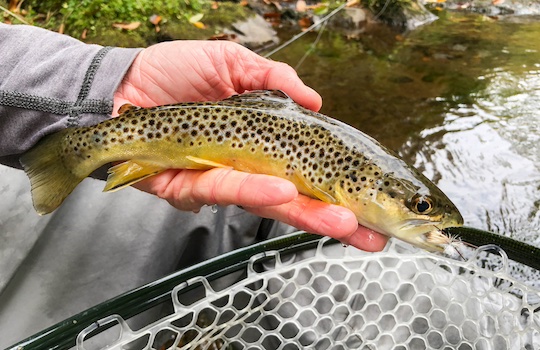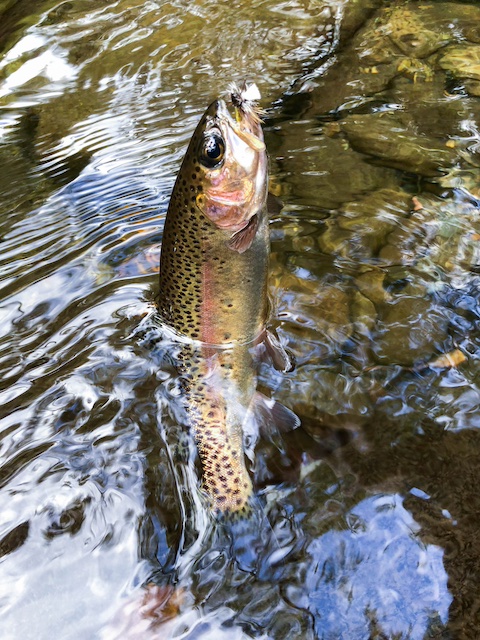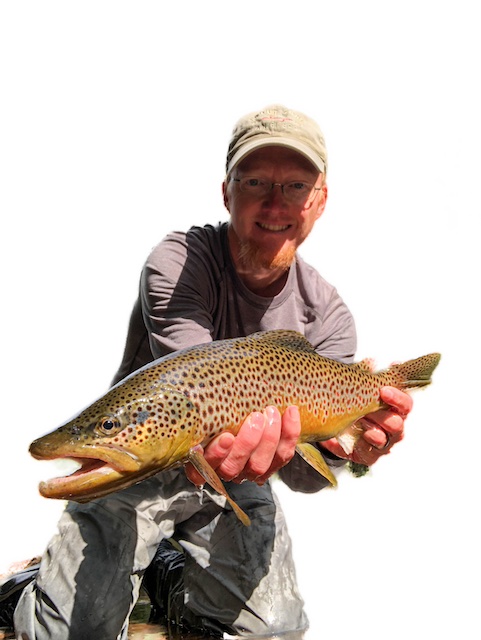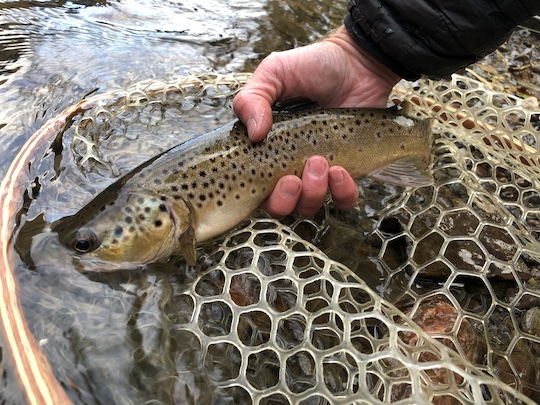Most fishing trips have unexpected moments. Our first came rather early in the trip with the bad wind day, but timing-wise it allowed some neat things to happen since it freed up a couple of days on our loose itinerary. We just wouldn't find that out until later. Still, this was my first Wyoming fishing trip outside of Yellowstone National Park. The very expensive non-resident fishing license had deterred me in the past and likely will in the future. It is hard to justify paying that kind of money for a fishing license when I can get a Yellowstone National Park fishing license and enjoy some of my favorite streams and rivers anywhere with excellent fishing. Still, there were moments in this trip that will require revisiting for further exploration. The Wind River golden trout trip is definitely going to happen again, for example.
Hiking Out of the Winds
Our goal that morning was simple: bust our butts back down the trail to John's truck, drive over South Pass, and on to Pinedale. Just north of town, John knew of a little campground that was right on the Green River. He also knew some good places to eat in Pinedale and even though it hadn't been long, backpacker dinners were starting to get old. That was motivation enough for me. I'm always a sucker for food.
We started hiking out early while the shadows were still long and it was nice and cool. We weren't in such a hurry that I forgot to take some pictures both in camp before leaving and also along the way. There was a small patch of fireweed just behind our camp. That morning, the rising sun light up the flowers perfectly while deep shadows lingered behind.
 |
| "Fireweed." ©2023 David Knapp Photography |
A little further above camp, a small colony of pikas had shown themselves while we were hiking up to the golden trout lake. They have to be one of my favorite (maybe even THE favorite?!?!) alpine and subalpine critters, and it is always a major highlight of my trips to the higher mountains out west to see them. I chased them up and down this rocky gully for a bit before the thought of that good food in Pinedale got me moving.
 |
| "Pika." ©2023 David Knapp Photography |
Fishing On the Hike Out
Hiking out, we didn't see too many interesting critters. There were a lot of squirrels active, however. It was getting a little late in the season and they were working overtime to get ready for the next winter season. I'm always a sucker for any animal photos, so I would periodically stop and try to get a creative shot of them.
 |
| "Just another red squirrel." ©2023 David Knapp Photography |
A bit more interesting than squirrels was the fishing. We stopped at the first lake we had hit on the hike in. There were just as many fish cruising around even if the wind was much worse than on our hike in. Still, we found a sheltered shoreline where many fish were cruising. Not only did I add another big (to me) tiger, but I also added a cutthroat to my total trip catch tally. I caught more brook trout as well, but didn't bother to photograph anymore because none of them on this day were noteworthy.
 |
| "Wind River Mountains cutthroat trout." ©2023 David Knapp Photography |
 |
| "A nice tiger trout!" ©2023 David Knapp Photography |
I also managed a selfie that showed me looking a lot more tired than I was actually feeling. It also showed the Peak Design capture clip. Notice a clip on both shoulder straps which enabled me to balance the strain on each side of my body by switching back and forth from time to time. This proved key to keeping my back, shoulders, and neck happy and not too sore. I tend towards having back and neck problems, so this innovated way of carrying the camera probably would NOT work well for me if I was just carrying it on one side the entire hike. As it was, I really enjoyed the system and got a few pictures that I wouldn't have otherwise of gotten.
 |
| "A rare selfie!" ©2023 David Knapp Photography |
Driving Out of the Winds to Pinedale
The road out was decent but not great. I was glad that we had John's truck instead of my car. The car would have made it, but we made much better time in the truck and it took the ride just like it was supposed to. As we started to turn the corner from the east side of the Winds into South Pass, the already breezy day really started to howl.
The winds were cranking through South Pass. By the time we were approaching the Green River basin, the sky was full of dust and haze from blowing particulates. This was a windstorm of epic proportions and we were both thankful to not be hiking high in the Wind River mountains trying to camp or get a camp stove to burn long enough to boil water for our meals.
At this point, I was just hoping that the winds would relax enough to pitch camp on the Green so I could get a good night's rest. We still had that stop in Pinedale as well.
Town Trip to Pinedale
By the time we cruised into Pinedale, both of us were hungry. Things like getting groceries for the next several days of camping or stopping by the local fly shop could wait. We had to find something to eat. John had been to the Wind River Brewing Company before and knew they had good food. We pulled in and found one of the last few parking spots. A full parking lot is always a good sign for food quality even if it means you'll end up waiting longer for food.
Thankfully, they had our food out quickly. I had the Street Tacos with sautéed veggies and they were delicious. It doesn't take much to make me happy, and a good meal after backpacker dinners really hit the spot. After taking care of that, we headed to the grocery and made a stop by the local fly shop.
The guys in the Two Rivers Fishing Co. were helpful and friendly, something I've come to realize isn't to be expected in all western fly shops. They gave us a few tips and we quickly finished our shopping in town. The hour was getting late and we still needed to go find a campsite and get setup before dark.
Camping at Whiskey Grove Campground
Heading out of town, we turned up 352 towards the vast National Forest land in the headwaters of the Green River. The Whiskey Grove Campground was just a short distance down the rougher gravel/dirt road that continued all the way up to Green River Lakes. John knew of a great fishing spot behind the campground, so it didn't take much more to convince me that this would make a good base camp.
We pulled in and got lucky with one of the last good spots down by the river. I would get to fall asleep to the sound of a fine riffle on the Green just behind my tent. However, I didn't go to bed before catching my first Green River trout. The pool behind camp was just too good and I wanted to work a jig streamer. I rolled several very nice trout, and finally landed a nice little brown trout to continue my collection of different species on my trip list. This was a great welcome to a new-to-me section of the Green River. I had only previously fished the Flaming Gorge tailwater in Utah. It was a promising start to the biggest part of our trip in terms of time..
 |
| "First brown trout of the trip." ©2023 David Knapp Photography |












































